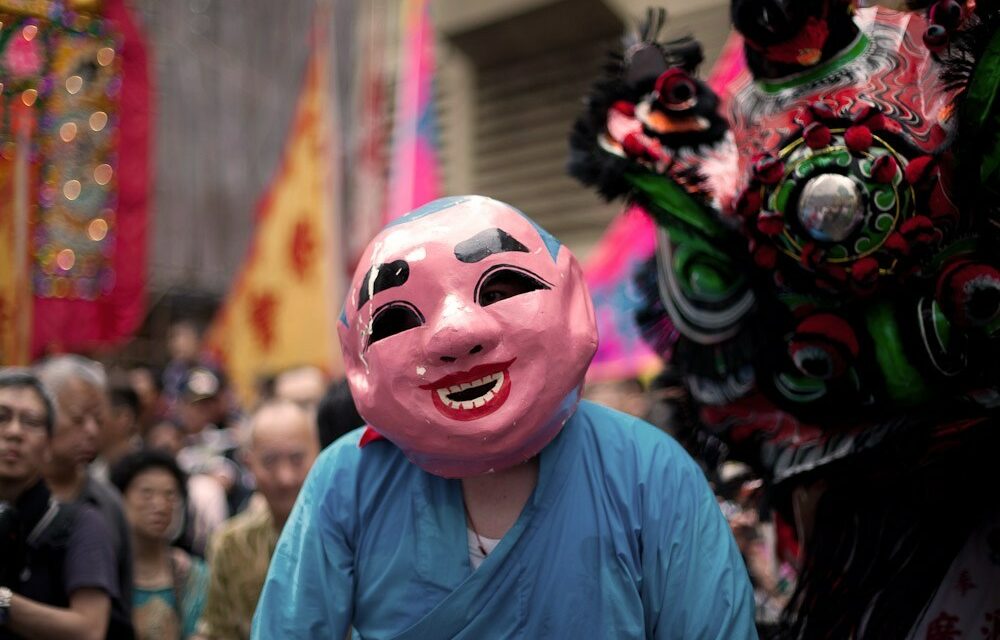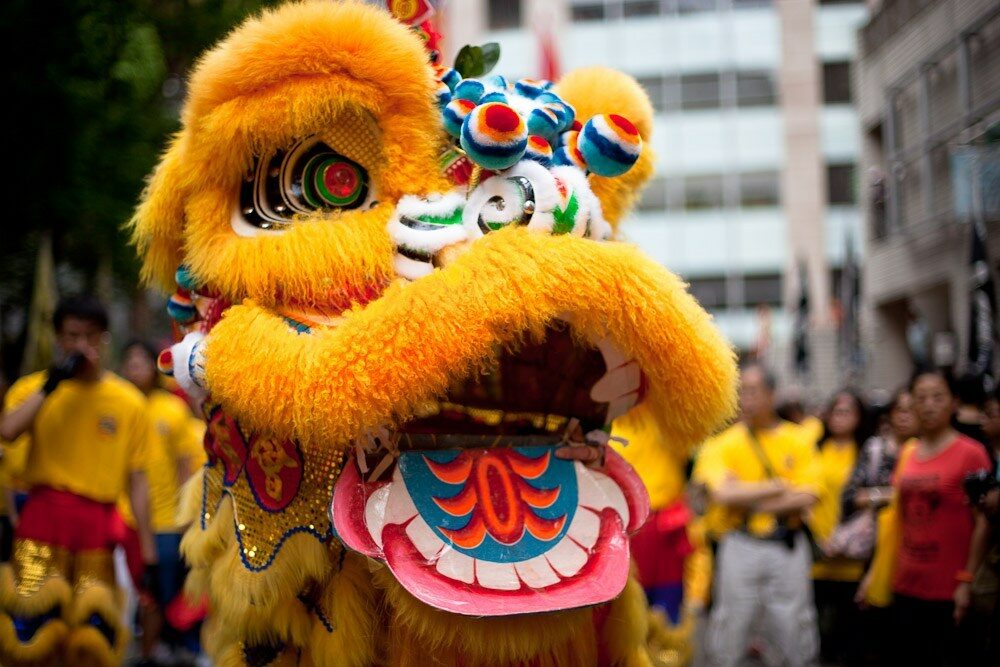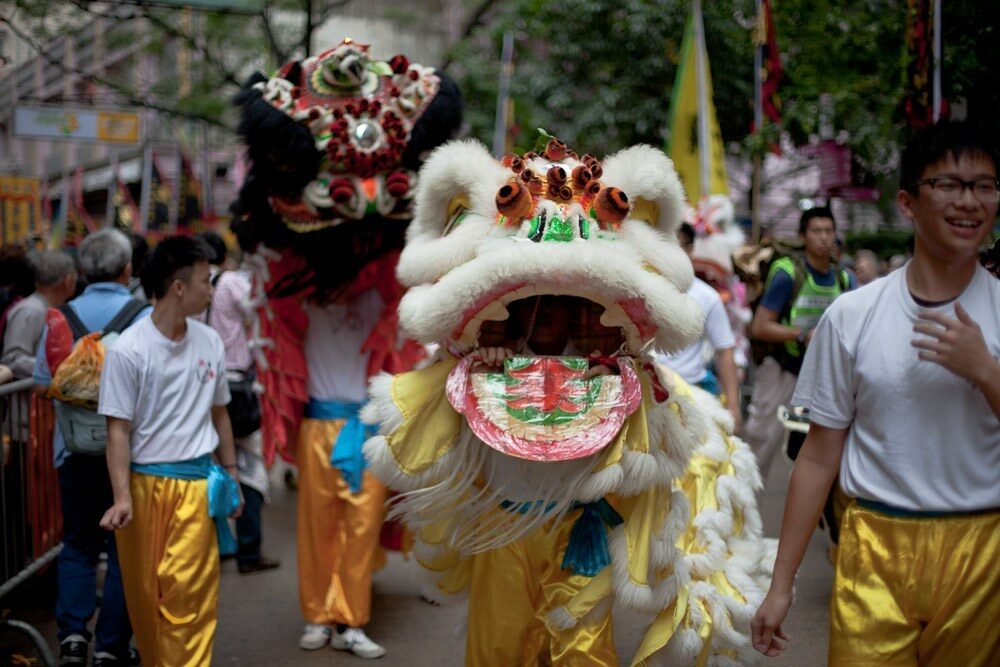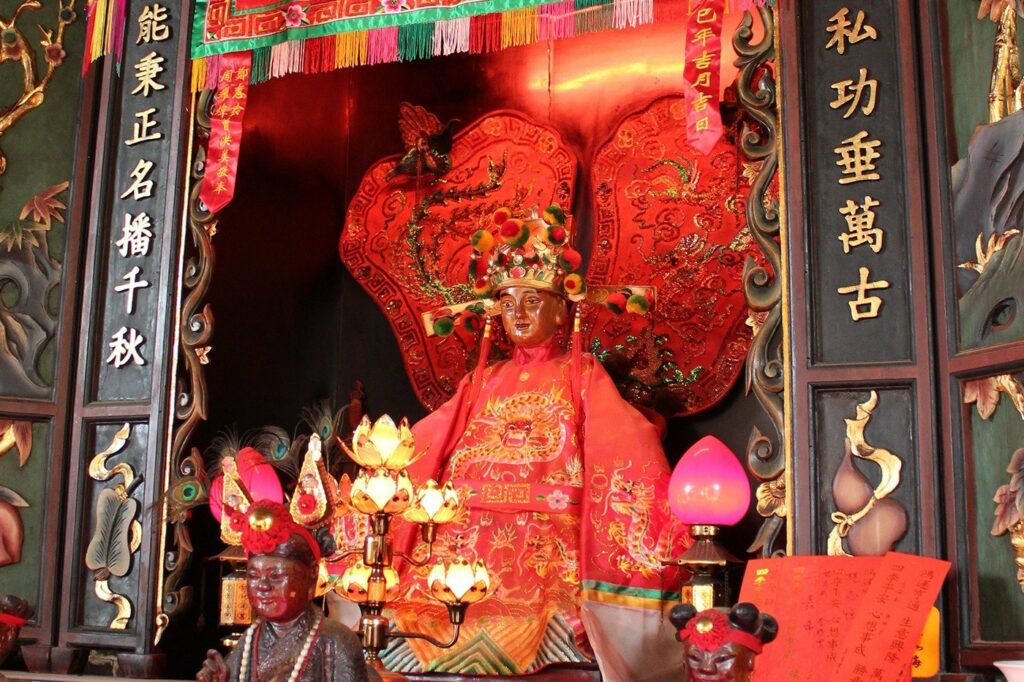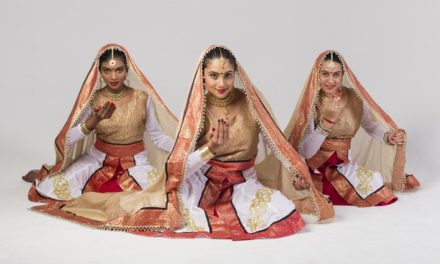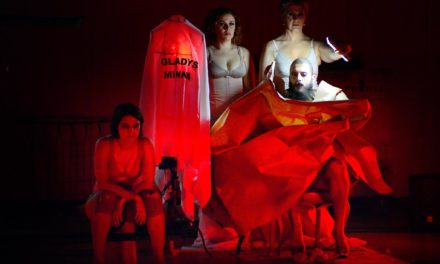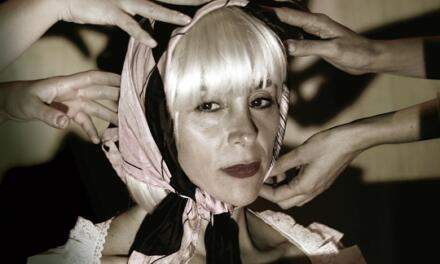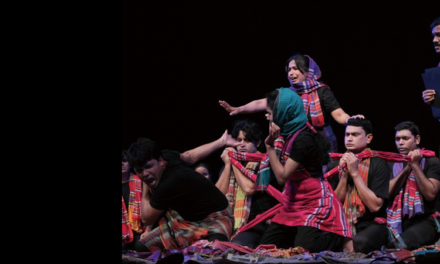Tam Kung is an enigmatic figure with little really known about his origins. The sea deity is always depicted as a child and his birthday celebration, on the eighth day of the fourth lunar month, coincides each year with the Buddha’s birthday – May 3rd this year. Despite this relative obscurity, Tam Kung has an oversized party for his birthday. It is marked by one of the loudest and liveliest parades in Hong Kong.
The banging and crashing of drums, gongs, and cymbals pierce the air and rings through the ears of the festival goers. The raucous fanfare announces the coming of the parade that steadily snakes its way towards the Shau Kei Wan Tam Kung Temple. Pride of lion dancers jumps about showing off their martial prowess, before making way for gods from other temples in sedan chairs being marched down the street. Floats with images of zodiac creatures and deities are pushed by members of clan associations and neighborhood groups who have prepared over several months for the grand parade. Dragon dancers run around in spirals and circles bearing magnificent beasts aloft. Martial artists and acrobats perform feats for the spectators and yet more lions prance about on bamboo poles. Young boys in the guise of Tam Kung are pushed along on small floats, while other children dressed as mythical characters are suspended in mid-air though hidden metal platforms, defying gravity and drawing the admiration of the crowds that have gathered to see one of the biggest spectacles in Hong Kong’s religious calendar.
The parade is magnificent. It always falls on a public holiday and it receives government funding, so it can afford to be especially impressive. Countless dragons and lions dance their way through the street, joined by the less common Hakka “unicorn” dancers (kei4leon4 mou5 麒麟舞), Fujian/Hakka-style lions with fearsome flat faces, and elaborate Hoklo “golden lions” (gam1 si1 金狮). The god Tam Kung (Taam4 Gung1 譚公), the object of all this commotion, probably came from Huizhou, a city in Guangdong with a strong Hakka presence. The parade is almost competitive, with various neighborhood associations (Gaai1 Fong1 Wui2 街坊會) represented. They all come bearing enormous offerings called “flower cannons” (faa1 paau3 花炮) that have been custom built by the paper offerings shops. While most offerings to the gods are burned in the temple furnace, these enormous flower cannons are normally taken apart, piece by piece and distributed after they have served their purpose. Because they are so complex, each part is a lucky emblem in itself.
As the procession continues, it passes the Shau Kei Wan Tin Hau Temple. Before moving past, the lions, unicorns, and dragons all dance and bow in obeisance in front of the temple door (baai3 jat1 baai3 拜一拜). It would be a sign of disrespect to pass the temple without acknowledging the goddess, even though it is not her birthday. While the mystical creatures of the dance troupes do this, the gods move by without needing to honor an equal. Eventually, the various parade participants arrive at the Tam Kung Temple (Taam4 Gung1 Sin1 Sing3 Miu6 譚公仙聖廟) and pay their respects before the huge smoldering incense sticks that burn away in front of the temple door.
Tam Kung, also known as Tam the Great Immortal (Taam4 Daai6 Sin1 譚大仙) is a youthful sea deity who is particularly popular in Hong Kong and Macau. There are a few accounts of his origins, but the story that has been traditionally told is that Tam Kung was a native of Huizhou in Guangdong and lived at some point during the Yuan Dynasty (1271-1368). At the age of 12, he attained the Tao and was able to cure the sick. The Taoist immortal kept his youthful appearance despite living into old age and was said to be frequently seen wandering around Nine Dragon Peak (Gau2 Lung4 Saan1 九龍山) in Huizhou with a tiger carrying his belongings. When terrible storms occurred, he would throw a cup of peas in the air and the weather would become calm. When rains were needed to prevent fire or water crops, he would throw a cup of water into the sky, calling forth torrents.
Despite being worshipped for several centuries, Tam Kung only gained official imperial deification during the Qing dynasty (1644-1912), receiving the title “Assistance and Aid” (Soeng1 Zai3 襄濟) from the Xianfeng Emperor in 1856. Why it took the best part of 500 years for this to happen is unclear. People from the Huizhou area are particularly devoted to the god, especially the Hakka of the region. In Hong Kong, his ability to forecast the weather and calm storms made him popular with the seafaring locals, ensuring his place in the pantheon of Hong Kong deities.
Another story, put forward by Jonathan Chamberlain in his popular Hong Kong book, Chinese Gods: An Introduction to Chinese Folk Religion, is that Tam Kung is the deified last child emperor of the Song Dynasty (960-1279), Emperor Bing, who locals believe died on Lantau Island in 1279, aged just seven years old. Both Bing and his elder brother, Duanzong, passed through what is today called Kowloon as they fled Mongol invasions. Duanzong is said to have counted eight hills and said there were eight dragons. His servant pointed out that, as he was the emperor, there were actually nine dragons (gau2 lung4 九龍) present. This escape is memorialized in the “Terrace of the Song Kings” rock carving in Kowloon City. It’s also how Kowloon, which means Nine Dragons, got its name.
Tam Kung temples are somewhat of a rarity. The oldest, Dragon Summit Ancestral Temple (Lung4 Fung1 Zou2 Miu6 龍峯祖廟) on Nine Dragon Peak in Huizhou, dates from at least 1824. A temple record from that year says that the original temple was “thousands of years old” and rebuilt in 1775 and again in 1824, which sounds a little far-fetched, considering that Tam Kung is meant to have lived during the Yuan Dynasty. It was simply a very long time and it really reflects that the community had no record of when the original temple was built. There is a Tam Kung temple in the Canadian city of Victoria, built in 1860 by Hakka people, and one in Sandakan in Malaysian Borneo, built in1894. Macau’s was built in 1862, making the Hong Kong temple the newest. Tung Ping Chau’s temple, the least well known, was built in 1877 by Chiu Chow settlers from Shantou on one of Hong Kong’s most remote islands. The Tam Kung Temple in Happy Valley was rebuilt in 1901 when the area was redeveloped.
The Shau Kei Wan temple, where the procession terminates, is home to the largest Tam Kung festivities. It was built in 1905 to replace a smaller shrine. It is the heart of the Tam Kung birthday celebrations. The night before the parade, festival organizers gather at the temple and light the three massive joss sticks that burn throughout the festival. People dressed as the Eight Taoist Immortals (Baat3 Sin1 八仙) conduct the Ritual of Celebrating Longevity (Ho6 Sau6 Ji4 Sik1 賀壽儀式), officially opening the festival. The next day, as the parade winds towards the temple, festivities are already in full swing. In the perfectly balanced fengshui of the temple buildings, the sound of the temple’s drum and bell punctuate the air as throngs of worshippers vie to place incense sticks and candles in the censer before the god. Old and young alike all crowd into the smoke-filled chamber that would choke the lungs of one unaccustomed to such an environment. The darkened hall of the temple contrasts with the light of the courtyard like a perfect coexistence of the forces of yin and yang. In a side courtyard, joss paper offerings continue to feed the dancing flames of the temple’s furnace. Paper money and other ignitable offerings fly up to the god in the form of smoke.
In the open plaza that lies between the temple and the sea, an opera shed is a venue for traditional Cantonese operas that entertain locals for a few days following the birthday celebration. The gods that have been brought to take part in the parade will make their way home to their own temples and the flower cannons will return home to their associations, where the auspicious objects that adorn them will be distributed among members. After the noise of the parade, calm returns to Shau Kei Wan. It is as though a raging storm has been quieted by the god’s cup of peas. Tam Kung has once again extended his protection to his devotees and Hong Kong collectively hopes for a year of mild weather.
Tam Kung’s birthday is celebrated at the Tam Kung Temple, Tam Kung Road, Shau Kei Wan.
Correction: Due to an editing error, an earlier version of this story was mistaken in its description of flower cannons. They are comprised of various auspicious objects, not flowers.
This article originally appeared in Zolima CityMag on April 27, 2017, and has been reposted with permission.
This post was written by the author in their personal capacity.The opinions expressed in this article are the author’s own and do not reflect the view of The Theatre Times, their staff or collaborators.
This post was written by Tom Billinge.
The views expressed here belong to the author and do not necessarily reflect our views and opinions.

